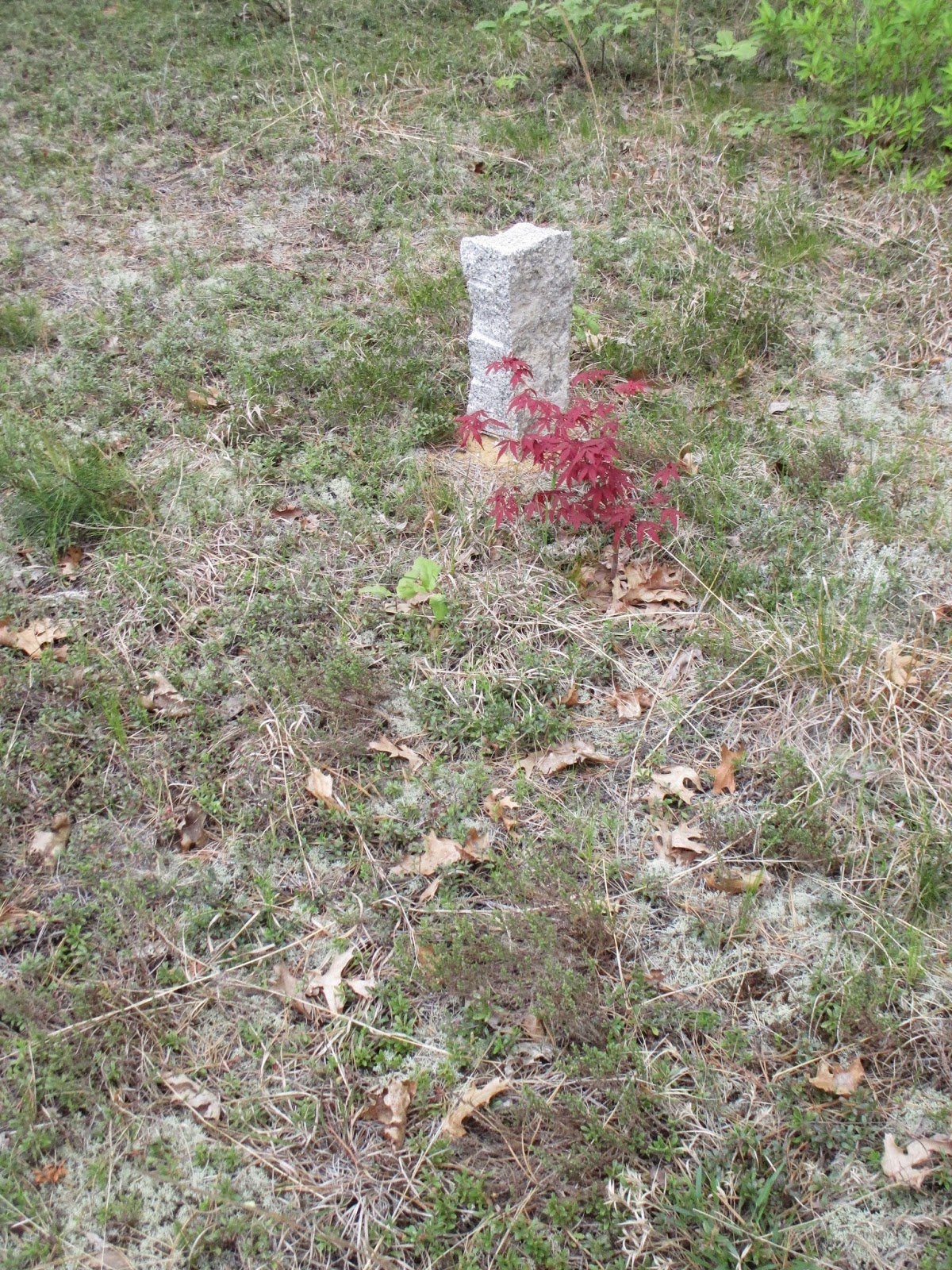SIGNS OF TIMES GONE 'BYE
Lacking prominence in spite
of occupying prime real estate, a necropolis of old bones is situated in South Wellfleet
along Cape Cod’s main thoroughfare traversing the cape’s upper peninsula. The South Wellfleet Cemetery,
interposed between waters of the Atlantic Ocean and Cape Cod Bay, harbors remains
of people who lived during the seventeenth and eighteenth centuries. Unabashedly old, it has weathered the
forces of nature in spite of geographical and meteorological relations with the
sea. The graveyard has remained
active in terms of continuing to shelter its denizens of death throughout
subsequent years and in the present.
Gravesites here bespeak heterogeneity.
Vestiges of traditional yore
mingle with a contemporary trend toward natural practices. The proprietor of the property promotes
burials without liners or vaults.
In some areas, grass has been restrained in a nod to common cemetery protocol.
But just as noticeable are the sections
dressed only in brambles and bushes au naturel.
Today’s contemporary model of groomed expansiveness has been
spurned in favor of nakedly unpolished exposure.




Old headstones are cloaked
in raiment of colorful lichens, manifesting the union of living elements
spurred by Mother Nature.
These slow-growing plants are composite organisms that grow together in a symbiotic relationship with fungi. Though some reproduce asexually, many require sexual coupling characteristic of fungi producing spores. Their habitat in some cases is an unlikely one for plants, allowing them to thrive on bare rocks, barren soil, and man-made structures such as walls, roofs, and monuments. Growth typically produces crust-like or leaf-like formations in branching patterns.
Lichen colors vary, and may
be green, black, gray, yellow, red, orange, brown, or blue. Here, as brightly prominent facets of
memorial stones, they readily draw attention. Of course, whether their conspicuousness is interpreted as blight
or beauty is in eye of the beholder.
Perhaps the most penetrating
awareness prompted by visiting this graveyard is a reminder that infirmity and physical defenselessness snuffed out existence at much younger ages in centuries immediately preceding the
current one. Often, birth and death
dates on the memorial stones denote profoundly abbreviated life spans. Though there is evidence of one
individual buried in 1897 at the ripe old age of eighty-four, many adults
succumbed to early deaths and multiple gravesites identify the demise of young
children struck down by ravages of untamed diseases.
Here, amid solitude uninterrupted
by human meanderings, a mindful appreciation for the evolution of medical and
technological advances breaks the silence of inattention. In this uncultivated
territory remotely distant from the cacophony of mainland liveliness, one’s spirit
is refreshed by a startling affirmation of progress toward longevity that
has enriched life in the twenty-first century.
__________________________________________________________________








